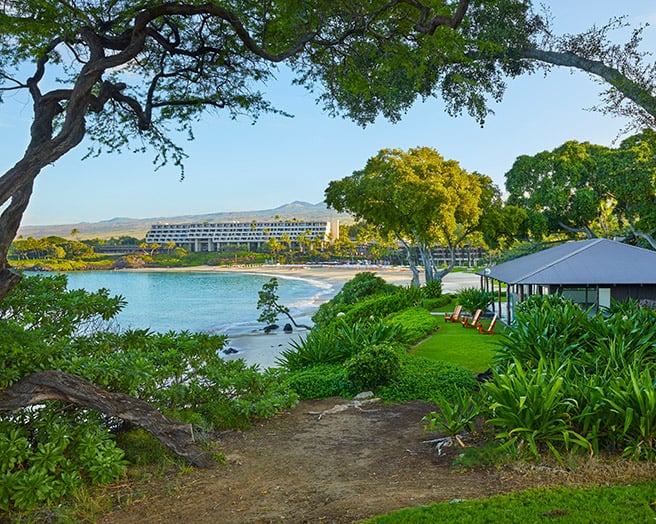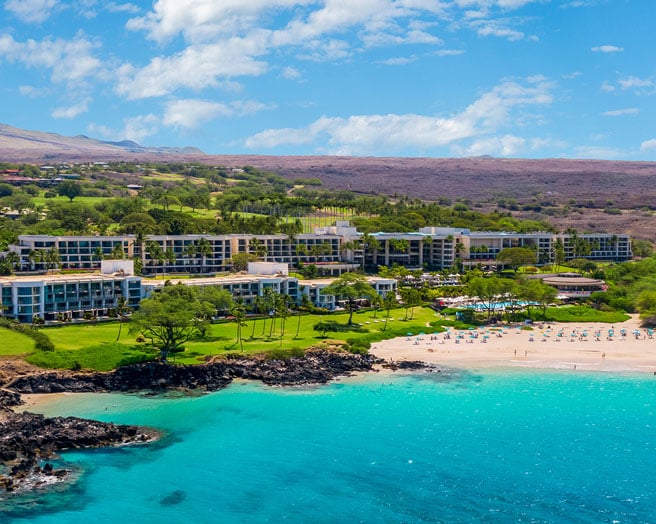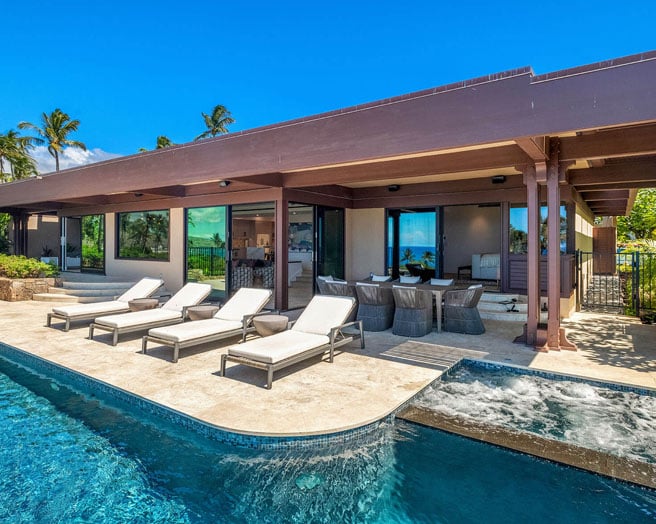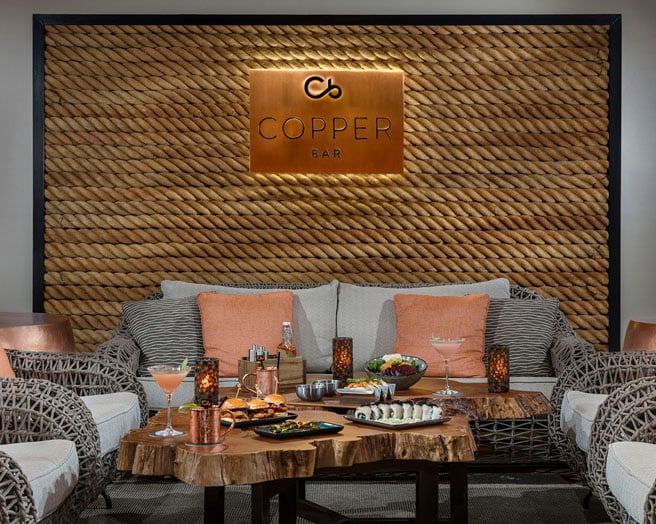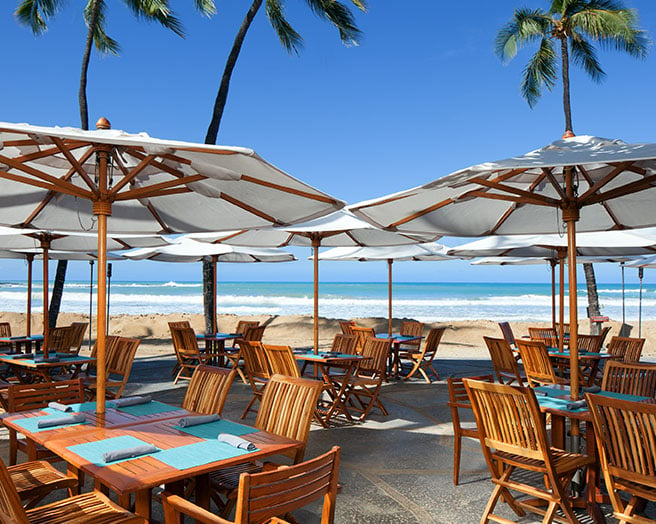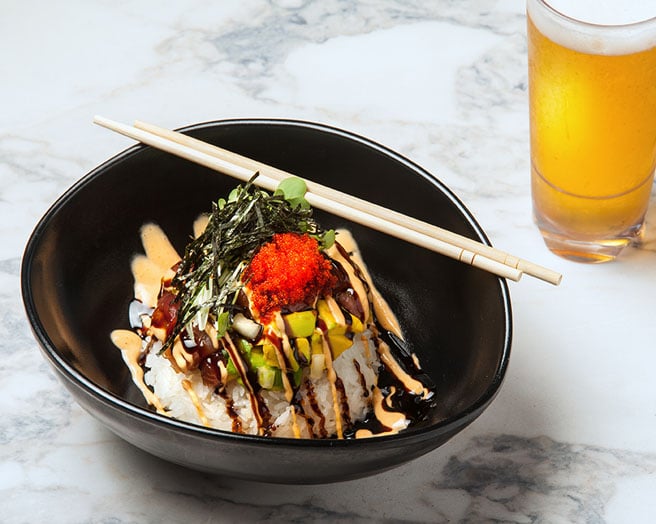History
Hawai'i Island's First Resort
It was while swimming in the turquoise waters of Kauna‘oa Bay, surrounded by a vast landscape of lava rock and ranchland with clear views of Maunakea’s summit, that American conservationist and venture capitalist Laurance S. Rockefeller decided to build Hawai‘i Island’s first resort. His inspiration to capture the spirit of this special place and ensure the hotel conformed to, rather than intruded upon, these beautiful natural surroundings, became today’s Mauna Kea Beach Hotel.



Design Refined
Rockefeller’s original concept was a cluster of individual cottages, with no televisions or air-conditioning to interfere with the natural environment of the Kohala Coast. Architects Skidmore Owings Merrill produced a dome-shaped model that was nearly washed out by a tropical storm, so a single building mid-century modern design was refined by lead architect Charles Bassett to take advantage of tropical breezes and ocean views. Air-conditioning proved to be crucial in the warm, nearly always sunny South Kohala climate. But from 1965 until 1995, the hotel operated contentedly without guestroom televisions, just as Rockefeller intended.



A First for Golf
In December 1964, six months before the hotel was ready to receive guests, Mauna Kea Golf Course opened and became Hawai‘i Island’s first course. Designed by Robert Trent Jones, who had pioneered a technique to create soil from lava rock, the course debuted with a televised “Big 3” match between Jack Nicklaus, Arnold Palmer and Gary Player.



Accolades Abound
At its opening in July 1965 with 154 guestrooms after a $15 million build-out, Mauna Kea Beach Hotel was the most expensive hotel ever built at the time. Praised by travel writers and critics worldwide, it was named one of the “three greatest hotels in the world” by Esquire magazine, one of the “10 best buildings of 1966” by Fortune, and presented with an honors award by the American Institute of Architects in 1967. Room rates, whispered as exorbitant, started at $43 per night and included breakfast and dinner in the Pavilion, which featured international cuisine.



The New Wing
The successful hotel expanded in 1968 with the Beachfront Wing, designed by Honolulu architects Wimberly, Whisenand, Allison, Tong and Goo, with interior design by Phyllis Brownlee. Original paintings by Hawai‘i Island artist John Young were commissioned for the guestrooms, and the Batik restaurant and Lounge was also added.



A Growing Family
Hapuna Golf Course debuted in 1992. Mauna Kea Beach Hotel closed for renovation in 1994, just months before Mauna Kea Resort’s Hapuna Beach Prince Hotel opened that August. The new hotel, also designed by architects Wimberly Allison Tong and Goo, delivered a contemporary resort experience on the south end of Mauna Kea Resort’s expansive 1,700 acre property. The hotel featured all ocean-facing rooms, extensive meeting and business facilities, and an exclusive villa. Mauna Kea Beach Hotel reopened in December 1995 and the two hotels, in tandem with private homes and villas, established Mauna Kea Resort as a world-class full service resort destination and residential experience on the beautiful Kohala Coast.



Tragedy to Triumph
Following a damaging earthquake in October 2006 and an unprecedented two year, $150 million renovation, Mauna Kea Beach Hotel reopened in December 2008. In classic Mauna Kea style, the hotel once again welcomed generations of guests to reconnect with life’s most authentic pleasures.



Marriott's Autograph Collection
With a historic milestone approaching, Mauna Kea Beach Hotel’s celebrated its 50th anniversary with exciting activation throughout the year as well as establishing partnerships with other organizations to showcase the hotel’s lineage and history. The hotel became Hawai‘i’s first Autograph Collection, the Autograph Collection is an ensemble of strikingly independent hotels across the country where each destination has been selected for its quality, bold originality, rich character and uncommon details. Additionally, the hotel was inducted as a member of Historic Hotels of America, an official program of the National Trust for Historic Preservation, which recognizes and celebrates the finest historic hotels across America.



Historic Hotel
Following Mauna Kea Beach Hotel’s 50th year celebration in 2015, it was inducted as a member of Historic Hotels of America. HHA is the official program of the National Trust for Historic Preservation, which recognizes and celebrates the finest historic hotels across America.



A Hotel and Resort redefined
Hapuna Beach Prince Hotel underwent a $50 million renovation, rebranding and grand reopening as The Westin Hapuna Beach Resort. A portion of the hotel was converted into stunning one to four bedroom private residences, the Hapuna Residences. Together with Mauna Kea Residences and Mauna Kea Beach Hotel, Mauna Kea Resort is unmatched on the Big Island of Hawai‘i. In its practice of “Aloha ‘Aina,” love of the land, ocean and its people, and in services and amenities for guests and residents, the Resort strives to be culturally pono (righteous) and connect visitors to all that makes Mauna Kea Resort and the Island of Hawai‘i so incredibly special and unique.

